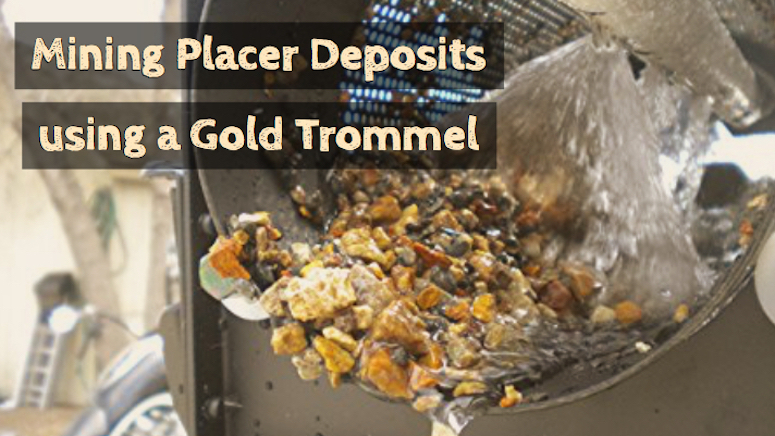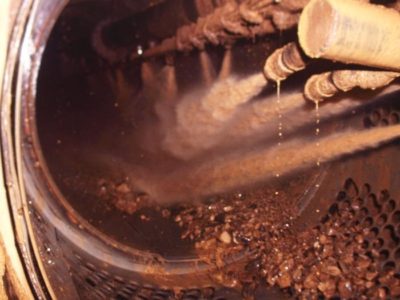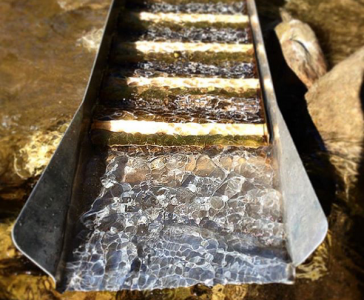
If you’ve every watched one of the mining shows on TV, then you’ve probably seen a trommel in action. Nearly all of the large commercial placer operations use them, but they are increasingly being used by smaller scale miners too.
The main function performed by the equipment is that of processing large volumes of gravel believed to contain gold. Since it takes tons and tons of gravel to recover even a small amount of gold, some sort of mechanism is required to separate out all the bigger gravel and worthless rocks. Once this is done, we can process only the smallest sized materials where the small gold dust and flakes will reside.
This write-up will explain how a trommel can be used to find placer gold.
General Function of a Gold Trommel

This picture shows a trommel that was used inside a large bucket line dredge. It could process tons of gravel per minute and was large enough for a grown man to walk inside. High pressure jets of water help to break up the clays and release gold into the sluices underneath.
First, the miner needs to dig out the gravel and separate the largest rocks. To reduce wear and tear on the trommel, most operators use a grizzly. This is the easiest way to get the big rocks out, and keep the small to medium material. Some larger wash plants contain grizzlies which may be positioned right over the trommel, allowing the separation to occur at the same time that the material is being dropped into the hopper.
After the grizzly, the contents are fed through the hopper. This is the primary feature of a trommel that makes it so efficient. A rotating drum with holes in it. This allows the material to separate as the drum rotates, and the smaller pieces fall through while the bigger rocks stay in the drum.
The hopper of most trommels also have water jets from within, which provides high pressure to break down any clay and dirt even as the drum keeps rotating while the slurry moves through the drum. This is especially important where high clays are present since it can catch and hide the gold.
Gold Drops into the Sluice

All of the fine material should fall through the hopper of the trommel. It then drops into a sluice box, where the gold will be captured just as it would normally. If large rocks were fed directly into the sluice box it would blow out a lot of gold and recovery rates would be lousy.
Once the trommel has been used to classify the content, then the placer gold can be recovered from the sluice box in a traditional method. Only the finer material is left to run through the sluice which means that it runs very efficiently and once everything is set up properly the capture rates are quite high.
Each trommel should be set up differently for optimal gold recovery. Different deposits have different types of gold. Clay content, shape and size of gold particles, size of rocks, volume of material to process… these things will all dictate how you should run your trommel operation.

Trommels for the Individual Prospector
It is also important that gold trommels can exist in different types and sizes depending on what one finds convenient. They are primarily used at the large mines, but there are smaller versions that can be used by prospectors too. Even a one-man operations can benefit from a small trommel setup. The functionality is exactly the same, they are simply smaller in size.
One of the better trommel setups for the individual prospector is this one. It is a trommel that is designed to work with the Gold Cube, my favorite piece of mining equipment for the placer miner. This is the perfect size for one of two miners, and you can shovel gravel directly into the trommel, which will then drop down into the Gold Cube. This setup will lose very little gold and is worth the investment if you are serious about finding gold.
Next: 6 Types of Micro-Gold Recovery Equipment in Action
*You can also read more about the Gold Cube here. It is a really good piece of mining gear that I would recommend to any serious placer miner, and when it is paired up with a trommel it works really well too.







